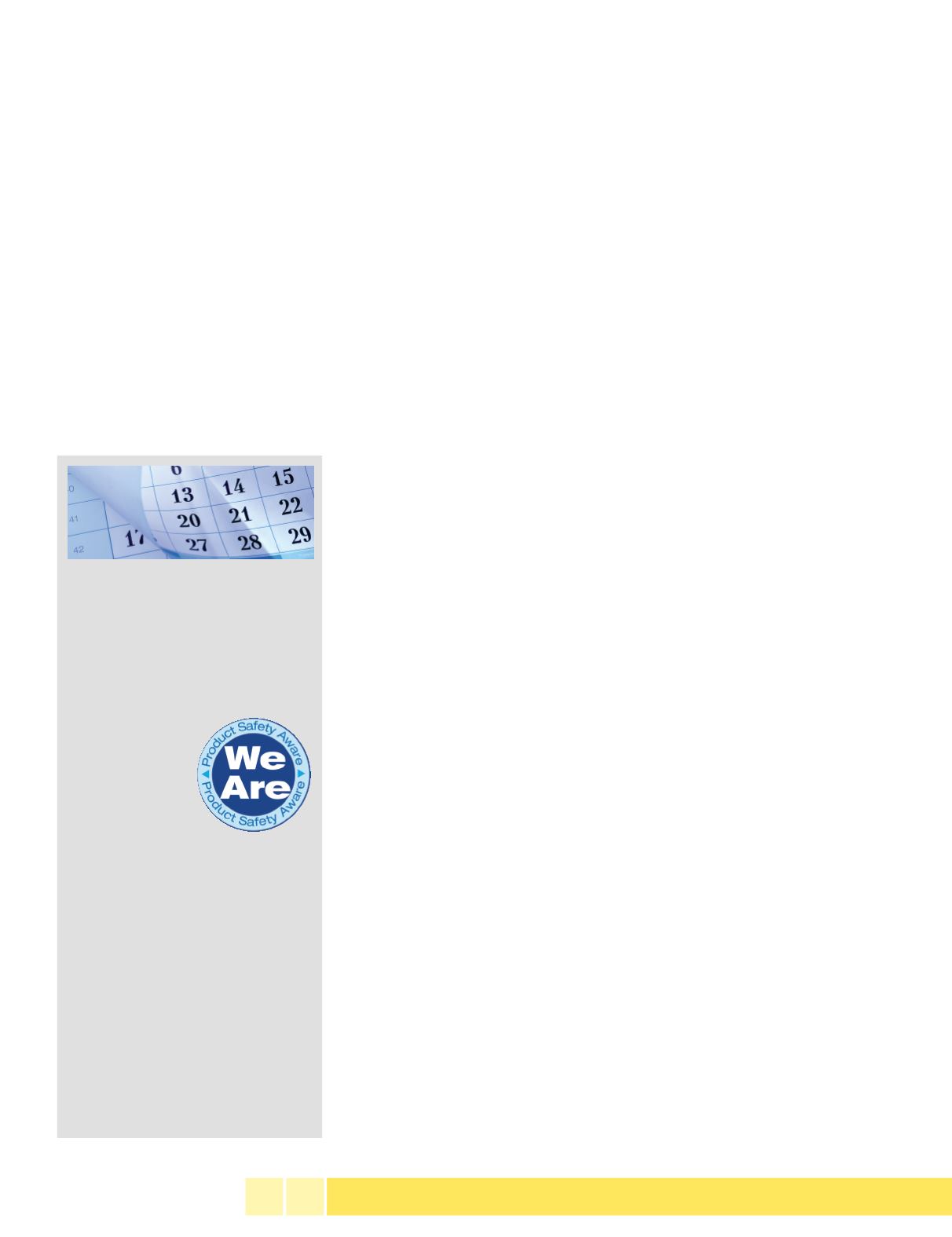

has become a necessary element to being a
successful player in the industry for both sup-
pliers and distributors.
For most compliance and quality pro-
fessionals, this is long overdue. It’s not an
easy profession; we are used to being the
“wet blankets” in our organizations, as most
days we go around telling supply chain and
salespeople what the company can’t (or
shouldn’t) do. Now we finally have our
moment in the sun as end users drive trans-
parency up our supply chains and put us
front and center.
You would think the compliance com-
munity would be happy about this, but we’re
as nervous as we are excited. Every company
has a corner of its supply chain that keeps
them up at night, and now customers want a
spotlight on them. People are now looking
at the promotional products industry as they
looked at the toy industry in the early
2000s—we are expected to know our ven-
dors and our vendors’ vendors, and we have
to be able to prove that each player is com-
pliant. As the bright light of transparency
shines on our industry, compliance teams are
scrambling to ensure we have the systems in
place to show we’re compliant, responsible
and safe.
This focus on transparency is being
driven by the same force that transformed
other industries—the customer. From a cus-
tomer’s perspective, you are responsible for
the entire supply chain to the end user’s
doorstep—and your customers will not
allow you to point to your upstream suppli-
ers if something goes wrong. Instead of
blindly inheriting the risks of your supply
chain, customers want documented compli-
ance before the sale and expect to be treated
as a partner.
Twenty years ago, the footwear and
apparel industries were similarly forced to
transform their sourcing strategies following
organized protests by student and consumer
groups. It took Nike almost 15 years to
release the names of its suppliers since the
first protests against sweatshops began in
1992. Apple released its supplier list in 2012
and Disney just released its list last year. Now,
more distributors and end users are making
similar demands to promotional products
suppliers. How long will it be until trans-
parency becomes the norm in our industry
like so many others?
This transparency movement is causing
significant changes in an industry that just
five years ago hardly mentioned compliance
and was typically secretive about its supply
chains. Also, our industry has unique chal-
lenges: Many of us offer a wide range of
products, including many low-cost items, and
we are continually being pushed to new
sourcing areas around the world. On top of
this, we place one of the most valuable pos-
sessions a company has—its logo—front and
center on the products we sell.
How Companies Can Meet The
Expectations
Keeping a compliant supply chain while
controlling costs and meeting an increasing
need for transparency is no easy task, and
companies that can find the right balance will
likely be the future industry leaders. Having
an experienced compliance officer on staff
and taking part in PPAI’s Product Safety
Aware program (see box) is a vital first step,
but much more is needed to stay aligned with
our customers’ expectations.
How can you be accountable for your
supplier base while protecting your business?
Below are a few guidelines that can help:
Develop robust compliance document con-
trol.
As transparency grows, the need for
accurate documentation that’s available on-
demand grows with it. A company needs a
system capable of organizing all the (current)
test reports, audit results and quality records
to allow a good compliance system to func-
tion. Some distributors and end users are
already pushing their version of systems up
their vendors’ supply chains, so one needs to
be prepared.
Set the company compliance policy and
make it customer-facing.
Once you decide
what information to share or not to share,
make sure your customers know. This will
likely require answering some hard questions,
such as “How do we document subcontrac-
tors?” and “When is it appropriate to share
audit corrective action plans?” Your suppliers
will respect and appreciate your leadership in
determining what is and is not an appropriate
level of transparency.
Make compliance a conversation.
Many
times requests for transparency are limited to
filling out a document or sending a single test
report. However, a company should look
deeper at each request and determine the rea-
sons behind what is being asked by discussing
it with the customer. Often companies need
assistance to ensure what they are asking is
76 •
PPB
• JANUARY 2015
THINK
Deadline Looming For
Product Safety Aware
Status
Beginning at Expo East 2015
on March 12-15 in Atlantic City,
New Jersey, all industry compa-
nies who want to access the PPAI
marketplace through
trade-show exhibit
space, sponsor-
ships and adver-
tising must
obtain Product
Safety Aware status.
Hundreds of industry companies
have already attained the status—
has yours? Getting there is easy:
1.Designate a roster employee to
serve as your Product Safety
Ambassador.
2.Have the employee complete
four hours of product safety
education from a required list of
three one-hour webinars, plus
one elective.
All the sessions you need are
offered free at The PPAI Expo in
Las Vegas this month. Get started
at
www.ppai.org/productsafety.Sunlight is the best disinfectant.
—WILLIAM O. DOUGLAS
”
“
















